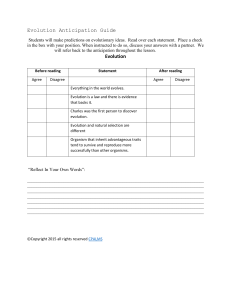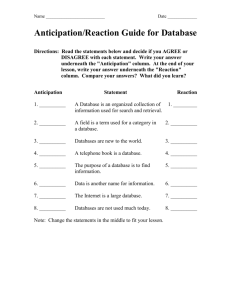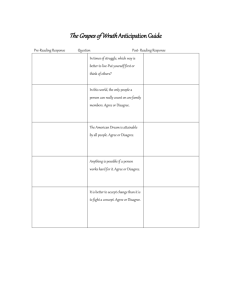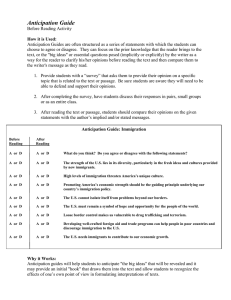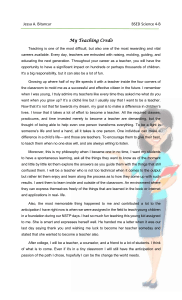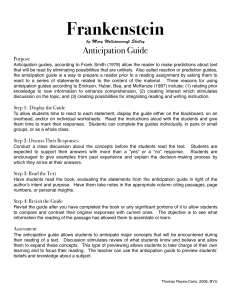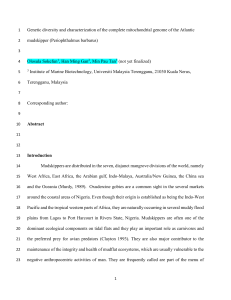Anticipation Guide
advertisement
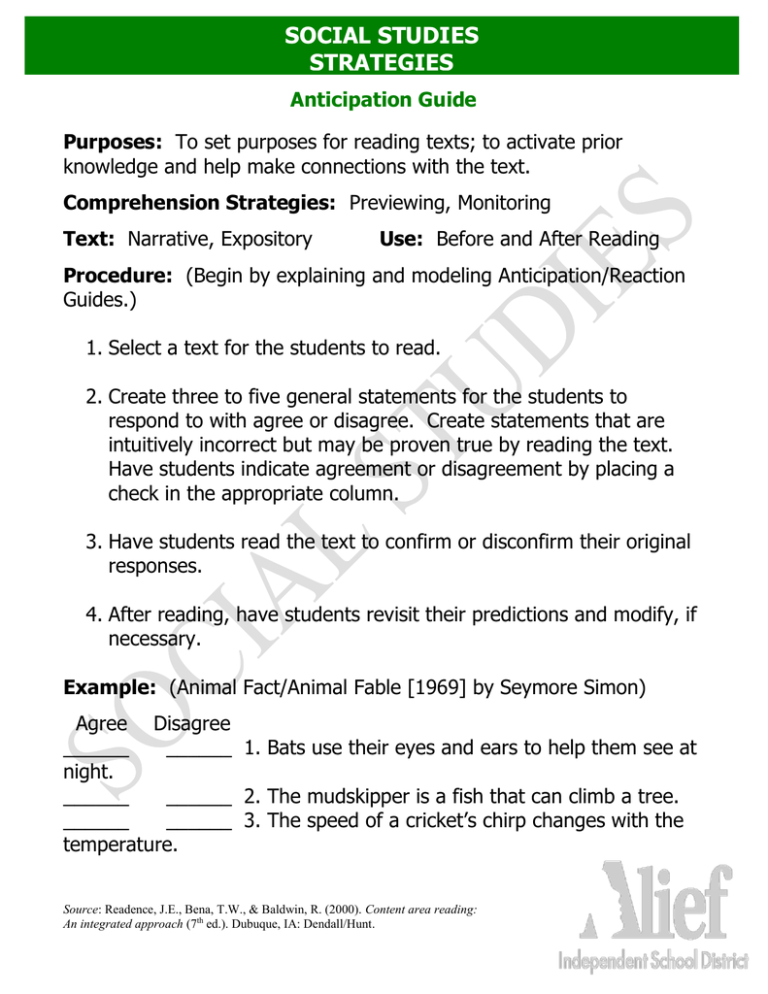
SOCIAL STUDIES STRATEGIES Anticipation Guide Purposes: To set purposes for reading texts; to activate prior knowledge and help make connections with the text. Comprehension Strategies: Previewing, Monitoring Text: Narrative, Expository Use: Before and After Reading Procedure: (Begin by explaining and modeling Anticipation/Reaction Guides.) 1. Select a text for the students to read. 2. Create three to five general statements for the students to respond to with agree or disagree. Create statements that are intuitively incorrect but may be proven true by reading the text. Have students indicate agreement or disagreement by placing a check in the appropriate column. 3. Have students read the text to confirm or disconfirm their original responses. 4. After reading, have students revisit their predictions and modify, if necessary. Example: (Animal Fact/Animal Fable [1969] by Seymore Simon) Agree Disagree ______ ______ 1. Bats use their eyes and ears to help them see at night. ______ ______ 2. The mudskipper is a fish that can climb a tree. ______ ______ 3. The speed of a cricket’s chirp changes with the temperature. Source: Readence, J.E., Bena, T.W., & Baldwin, R. (2000). Content area reading: An integrated approach (7th ed.). Dubuque, IA: Dendall/Hunt.

